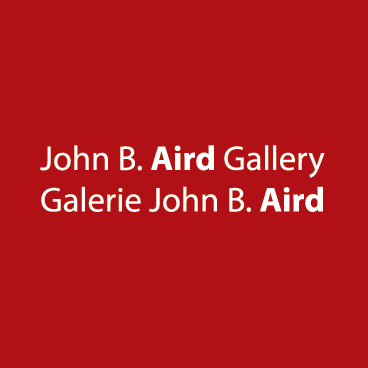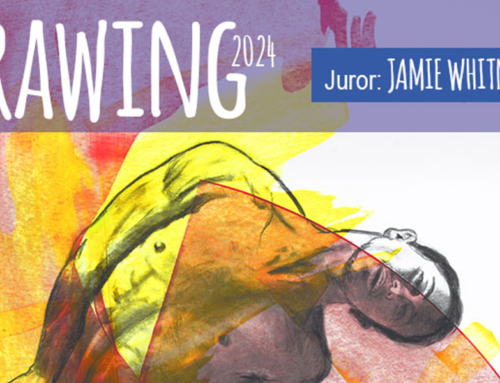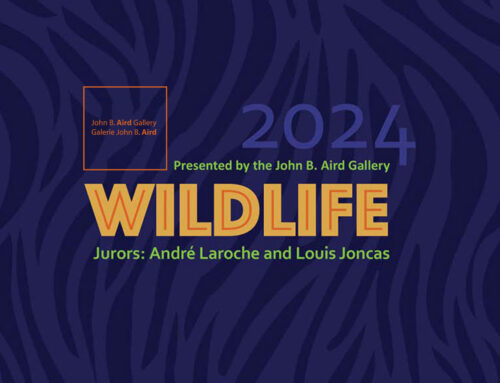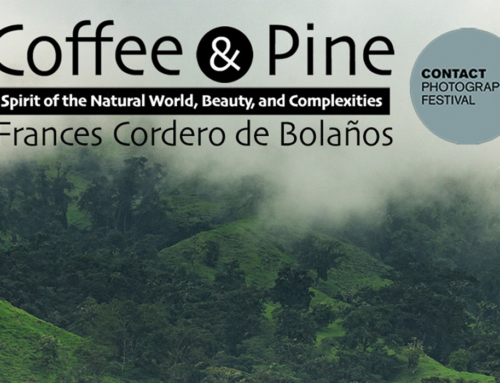CURATORS: ANDRÉ LAROCHE AND LOUIS JONCAS
R I T U A L S
JUNE 20 TO AUGUST 2, 2024
GARDEN PARTY: THURSDAY, JUNE 20, 5 – 7 PM
CURATORIAL DISCUSSION: SATURDAY, JUNE 22, 3 -5 PM
TED BARKER
LYNNE COHEN
DANTE GUTHRIE
LAURENCE HERVIEUX-GOSSELIN
LOUIS JONCAS
STEVE GIASSON
TERENCE KOH
STEPHEN LACK
JANA STERBAK
DANA VELAN
The John B. Aird Gallery is delighted to announce our summer of 2024 pop-up show organized by Montreal-based LarocheJoncas gallerists, André LaRoche and Louis Joncas titled R I T U A L S featuring drawing, painting, photography, and sculpture by Ted Barker (Winnipeg), Lynne Cohen, Dante Guthrie, Laurence Hervieux-Gosselin, Louis Joncas, Steve Giasson, Terence Koh, Stephen Lack, Jana Sterbak, and Dana Velan (Montreal).
Laroche and Joncas bring their wit, irreverence, skepticism, introspection, and spirituality to this curatorial project. They present viewers with a richly layered multimedia show informed by their perspectives on art and artists gleaned from a lifetime of making art and representing it as gallerists primarily in Montreal.
Laroche and Joncas work together as a curatorial collective, frequently discussing the presentation of new and older pieces in concert. They create updated displays for artworks, aiming to challenge the traditional chronological order typically found in museum retrospectives or commercial settings to illustrate how objects can convey different meanings depending on their display context.
Documentation of their Aird Gallery project will be gathered and showcased in an online catalogue, inclusive of an essay by the Montreal-based artist and writer Natalia Vilotijevic.
The Aird would like to take this opportunity to acknowledge and thank Montreal-based artist/curator/educator, Natalie Olanick for continuing to build bridges between our Toronto and Montreal-situated art galleries.
CURATOR BIOGRAPHIES
ANDRÉ LAROCHE studied Art and Communications at McGill University, then moved to New York City in 1982 to complete a BFA in Cinema Studies from New York University TISCH of the Arts. After returning to Montréal, he was a painter for 15 years before starting a gallery in Montréal.
Laroche is the principal co-owner of Galerie Laroche/Joncas, originally established in October 2005 under the rubric Projex-Mtl as a two-artist venture by André Laroche and Louis Joncas. In September 2010, the gallery changed its name to Galerie Laroche/Joncas.
For over 15 years LarocheJoncas was located among many of the most vibrant galleries in the Belgo Building in Montreal. Their contemporary art gallery was and is renowned for representing influential artists such as Jana Sterbak, Lynne Cohen, Stephen Lack, and Anna Torma.
In July 2023, the gallerists relocated their exhibition space to their apartment as a way to rethink the dynamics of the gallery experience and present art in a more intimate context. They continue their support of emerging artists as well as established ones, as they plan to work with fewer artists, opting for a more personalized and modest approach.
Currently, LaRoche and Joncas operate as a curatorial collective, presenting projects in their space at The Apartment in Montreal, Quebec, and at La Shed in Gabarus, Nova Scotia.
LOUIS JONCAS is a conceptual photo-based artist born in 1959. He holds a BFA from the University of Ottawa and an MFA in photography from Concordia University in Montréal.
He is known for utilizing common detritus to create still-life/nature morte tableaux, incorporating advertising lighting and product placement techniques. His photographic Vanitas have been exhibited in Quebec, at the National Gallery of Canada, Ottawa, New Orleans, and in Aix-en-Provence during France’s Rencontres de Arles photo festival.
His work can be found in institutional collections such as the National Gallery of Canada, Ottawa, the Montreal Museum of Fine Arts, the New Orleans Museum of Art, Louisiana USA, and numerous private collections.
Joncas shares his time between Montreal and Gabarus, Cape Breton, Nova Scotia, where the gallery has a project space called La Shed, which presents seasonal exhibitions while co-directing Galerie LarocheJoncas.
ARTIST BIOGRAPHIES
DANTE GUTHRIE was born in Calgary, in 2012 he lived with his family in Toronto for some time, he now lives and works in Montreal. He completed a BFA in Photography at Concordia in 2019 with a minor in Biology in 2020. but was more concerned with sculpture and installation by that time. For the last couple of years, he has been appropriating popular figures from science-fiction in metal casting. His interest lies in the failures of modern science and how we fictionalize history to support contemporary institutions.
In May 2024 Guthrie presented an exhibition titled “Poinsetismo” at Compas_88, in Mexico City at The Descent, in the 2023 offsite group show at Mount Douglas Cave, Victoria, Canada in 2023 he was part of the exhibition “Annihilation” at Galerie Laroche/Joncas. He also exhibited at le Livart in Montreal and the Humble Arts Foundation in New York. His works can be found in private collections in Canada and Germany. Guthrie has been honoured with grants from organizations such as the Canada Council of the Arts and Architecture.
LAURENCE HERVIEUX-GOSSELIN’s artistic practice is concerned with the ways that storytelling shapes our notion of reality and helps us find meaning in our surroundings. Through photographic series, she investigates modern myths, popular stories or her own history, weaving distinct stories into complex narratives that invite novel interpretations of the real. Guided by how we subconsciously borrow narrative conventions from stories to build our own, her approach to image-making seeks to deconstruct this primal impulse and let new meanings emerge.
Mainly photographed on medium format film, her series create atmospheres that imbue landscapes, interiors and characters with an uncanny sense. While some of her photographs are premeditated mises en scène, others are made during field research. Ultimately, the distinction between these processes is intentionally blurred to reveal a parallel world that is both familiar and strange.
Laurence Hervieux-Gosselin (1991) is an artist and photographer based in Montreal. She studied scriptwriting and communication at Université du Québec à Montréal, has a BFA in Photography from Concordia University, and an MFA in Art Photography from the College of Visual and Performing Arts of Syracuse University. In 2021, she won the Lynne-Cohen Prize.
She was a finalist for the Scotiabank New Generation Photography Award in 2018, and a finalist for the Ideastap Photographic Award with Magnum Photos in 2014.
Recently, her work has been shown at the Musée des beaux-arts de Mont-Saint-Hilaire on the 10 year anniversary of the passing of Lynne Cohen hommage exhibition Abscense/Présence curated by Robert Hébert, in Septembre she inaugurated L’Appartement, the new exhibition space of Galerie LarocheJoncas with her first solo exhibition with the gallery titled Chalk Moon. In 2022 she was part of the Rencontres Internationales de la photographie en Gaspésie (2022) where she presented her project ‘Fly on the Wall’ on large exterior panels, at Galerie La Castiglione (Montreal, 2020) which closed during the panic, at Uqbar (Berlin, 2018) and at the China Millenium Monument (Beijing, 2018).
YVES TESSIER (b. 1955) is a Canadian-born artist who maintained studios in both Montréal and New York City for more than 20 years. He recently moved back to work and live in Montréal. He uses casein paint on aluminum and wood to create flattened narrative scenes of situations and characters that have been sourced from real-world observation, television and the internet, and his imagination. Over the years, the artist has developed a unique pictorial language that explores a multitude of different scenarios and subjects. Tessier always transforms his sources of inspiration, whether they come from his surroundings, movies, newspaper clippings and more, into quiet but potently original scenes.
With wet, fluid strokes laid down over dry strokes, he works in casein paints on an aground of marble dust gesso, applied to aluminum and wood panels. This technique lends an extra dimension of graphically elegant flatness to his compositions; his fields of colour simultaneously evoke our quotidian reality and a profoundly intimate perspective in equal measure. As a result, Tessier transforms the everyday world we live in with a freshness of seeing that radiates a genuinely visionary atmosphere, one which has both humorously troubling, and energetically cathartic effects.
DANA VELAN, an artist living and working in Montreal, Canada, left her native Czecho-Slovakia during the political turmoil of 1968. She earned a degree in Art History at McGill University, and a degree in Fine Arts at Concordia University in Montreal, and her MFA at the Art Institute of Boston at Lesley University, Boston, Massachusets.
Velan started as a printmaker but soon moved on to work on drawings, one-of-a-kind books and some 3-dimensional pieces. Her life experiences and travels through unusual landscapes, such as Iceland, Australia and Africa, contribute inspiration to her unique artistic aesthetic. She creates in series. Nests, Hearths, Stages, Fire, Nightland and Termination Flags are just a few titles of her drawings. Nightland series are large-scale drawings (90” x 126”) which demonstrate her interest in natural phenomena and their impact on the human soul. Using oil sticks on mylar Velan created images that are metaphors for our inner landscape.
The newer series of drawings maps the imaginary landscapes. Spaceless and legendless these drawings escape exact definitions. They can be images of cells and veins as they crisscross inside a body, or they can be rivers and roads, towns and cities, mountains and lakes in landscapes seen from above. Some are executed in pen and ink and watercolour, and some with oil sticks on mylar, these maps very loosely pretend to be reality. But in the end they are the lines, cellular dots and watery stains that contract and expand in the space of white paper or mylar. Blending inner and external landscapes without giving the coordinate system leaves the images open to several unknown meditations.
TED BARKER was born in Winnipeg where he lives and works. He graduated in 2007 with a BFA with a major in painting from the University of Manitoba. In 2016 he presented at the gallery “Legacy” a solo exhibition where he explored the legacy of his grandfather a source of inspiration for the artist.
His impressive skills and meticulous renderings of his eclectic subjects leave the observer questioning about the status of the work, whether it is a photographic image often in disbelief that the work is actually drained of paint.
Following is a text published in Border Crossing Magazine Artifactotems: Drawings of Ted Barker
The tense that drives the drawn world of Winnipeg artist Ted Barker is the present-past. He has set himself the task of reinventing his grandfather’s life in a wilderness that was already an invention, even while it was being lived. His Opa immigrated to Canada from the Netherlands after the war and found in the Lake of the Woods a place that perfectly suited his sense of self-reliance. An engineer by training and a university professor by trade, his summers were spent in a log cabin he built in 1952 with available tools and from trees on the land. “He was an outdoorsman,” Barker concedes, “but he pushed it to the point of being contrived. He wanted everything to be as rustic as possible. He did surveying trips up north where he would buy snowshoes and old rifles, and he filled the cabin with bearskins and traps. He crafted this perfect environment that was almost like a movie set.” The figure of Grey Owl seems to have flown into the camera’s eye.
In his drawings, Barker casts himself as the ‘best-supporting actor’ to his grandfather’s lead role. He works from photographs in which he is dressed in his grandfather’s buckskin coat, sometimes shooting a rifle, at other times simply projecting an arm into space, but always either faceless or looking away from the viewer. The drawings, then, are a curious combination of self-portraiture and a portrait of the coat itself. Barker is not alone in this invention. In Winnipeg, artists of different generations, including Ivan Eyre and Karel Funk, have used unusual head wrappings and deliberate facelessness to make compelling pictures. Barker is familiar with and admires both.
Something in the artist’s devotion to and close observation of this familial past approaches the religious. Most recently, Barker has become attracted to tarps. Their source is, not unexpectedly, the same natural world from which he has drawn both his content and inspiration. Because the family cottage is being expanded, tarpaulins and coverings have been left around the property. They have become his newest costume. “I’m really getting into the tarps right now,” the artist admits. “They are made to keep out the environment, so they represent a barrier between two worlds.” His covering allows him to be in a world of remembered invention at the same time that it allows him to stay out of one troubled by relentless change and loss. Barker recognizes that these tarps are the same “draping, encapsulating cocoon” that he has consistently worn in making his family drawings. There is no question that he is protected inside the surrounding drapery he so deftly captures on the page. But equally determining is the cocoon itself, a form of enclosure that promises, and ultimately delivers both change and beauty.
LYNNE COHEN (1944-2014) made important contributions to contemporary art as well as to photography itself. Her work enjoyed early critical acclaim and was from the beginning both highly innovative and rigorous. She is known for her photographs of domestic and institutional interior spaces, which have included living rooms, public halls, retirement homes, laboratories, offices, showrooms, shooting ranges, factories, spas, and military installations.
Trained as a sculptor and printmaker, when Pop Art and Minimalism were dominant in the art world, Lynne Cohen had a long-standing interest in the artificial and the everyday. She mainly focused on the way places appear and function in our lives. The disorientation that her photographs provoke largely results from the specific and mysterious nature of these places with their odd symmetries, repetitions and absurd disjunctions of scale. Starting in 1970, Lynne Cohen photographed unpeopled public and private interiors, notably living rooms, men’s clubs, classrooms, meeting rooms, conference halls, hotels, lobbies, offices, showrooms, waiting rooms, halls, corridors, spas, military installations, observations rooms, laboratories, shooting ranges, factories and other interiors. While her work has social, political and sometimes critical implications, it also has a wry humour. The places she photographs exist but they often look like constructions, even like installations. “I feel”, she once observed, “that the world can’t be like it is. It seems full of finished works of art”. The pictures themselves, all meticulously crafted, are minimalist objects and her use of a plastic laminate frame makes them even more like objects and further blurs the boundary between the spaces depicted and the real world. The formal and narrative complexity of the finished photographs draws the viewer in and the closer one gets, the more the pictures open up. In 1999 she began to investigate how colour works as a distancing device and the many ways it renders space unreal.
There are 11 books devoted to Cohen’s photography: Occupied Territory, Aperture (1988 / 2012); L’endroit du décor / Lost and Found, FRAC-Limousin (1992); No Man’s Land, Thames and Hudson (2001); Camouflage, Le Point du Jour (2005); Cover, Le Point du Jour (2009); Lynne Cohen, Dazibao/Vu (2011); Nothing is Hidden (2012); Almas Gemeles, Tender Puentes, (2012); Faux Incides/False Clues, Musée d’art contemporain de Montréal (2013); Lynne Cohen, Mapfre Foundation (2014); Lynne Cohen: Double Aveugle, Edition Hazan (2019).
Cohen received numerous awards from the Canada Council, Ontario Arts Council, and the Conseil des arts et des letters, Québec. In 1967 she received a Logan Award, 71st Annual Exhibition of Artists of Chicago and Vicinity, Chicago Art Institute, in 2001 received a Gold award in National Magazine Awards, Canada, in 2005 was accorded the Canadian Governor General’s Award in Visual Arts and Media Arts in 2005 and in 2011 was the first winner of the Scotiabank Photography Award. She is represented in many public and private collections including Art Gallery of Ontario; Art Institute of Chicago; Australian National Gallery; Bibliothèque Nationale, France; Canadian Centre for Architecture, Montreal; Centre Pompidou, Paris; Centro Gallego de Arte Contemporáneo, Santiago de Compostela; Colección del Fondo Fotográfico, Museo Universidad de Navarra; Fundación MAPFRE, Madrid; George Eastman House Museum, Rochester, NY; several FRAC collections (France); International Center of Photography, NY; Metropolitan Museum of Art, NY; Musée d’art contemporain, Montréal; Musée national des beaux-arts du Québec; Museum Folkwang, Essen; Museum of Contemporary Photography, Chicago; Museum voor Fotografie, Antwerp; National Gallery of Art, Washington; National Gallery of Canada; New York Public Library; Princeton University Art Museum; Tate Modern, London; Thessaloniki Museum of Photography; Walter Phillips Gallery, Banff, Alberta; Winnipeg Art Gallery. Lynne Cohen has had well over 100 one-person shows and exhibited in more group shows, including major retrospectives at The National Gallery of Canada (2002), Musée d’art contemporain, Montréal (2013); Fundació Mapfre, Madrid (2014); Pavillon Populaire, Montpelier, France (2019) and Museum voor Fotografie, Antwerp (2020).
STEVE GIASSON was born in 1979 in Victoriaville, Québec, is a conceptual artist and a Ph. D. in Arts Studies and Practices from UQÀM, Université du Québec à Montréal. His committed and tongue-in-cheek practice is based on pre-existing artworks or historical or daily fragments, which he appropriates in different ways, to undermine romantic notions of authenticity and originality and demystify the creative process and the figure of the artist.
His works are characterized, moreover, by a great economy of means and by their use of different mediums (painting, drawing, sculpture, performance art, photography, conceptual writing…)
His first exhibition with the gallery “Andy Warhol” in May-June 2023 was his first solo exhibition with the gallery. His work has been presented in fourteen countries in North America, Europe and Asia, in a dozen solo exhibitions and numerous group exhibitions, including the Liverpool Biennial 2012, the Text Festival 2011 and 2014 (Manchester), ED RUSCHA BOOKS & Co. at Museum Brandhorst (2013, Munich) and at the Gagosian Gallery (2013, New York City, 2015, Paris and 2016, Beverly Hills) and the Morni Hills Performance Art Biennale II (2018, Morni Hills and Chandigarh, India).
The artist lives and works in Montreal.
TERENCE KOH was born in 1977 in Beijing, China and grew up in Mississauga, Canada. He received his Bachelor’s degree from the Emily Carr Institute of Art and Design in Vancouver. He is currently living in New York City. In 2008, he was listed in Out magazine’s “100 People of the Year”, and was short-listed for the SOBEY awards. He has exhibited widely around the United States and extensively abroad. In his installations, objects, wall pieces, and performances, Terence Koh creates a space in which memory and imagination mix with art history and subculture. He explores such diverse subjects as mythology, religion, identity, power, fashion and sexuality, in an often provocative manner, charged with possible symbolic readings. He is most well-known for his monochromatic installations and ritualistic performances.
Terence Koh has built a following with installations and performances that are characterized by a gothic-infused sensitivity. His work is ritual in nature and uses objects and images to examine identity, meaning and fetishization. Koh’s recent interest in natural ecosystems has led him to use organic materials, focusing on interaction and time-based processes as metaphors for human thoughts, energy flows, civilization and life cycles.
Terence Koh is now based in Antwerp, Belgium.
STEPHEN LACK was born in Montreal in 1946. He graduated from McGill University in 1967 with a Bachelor’s degree in Psychology. He completed his MFA in sculpture at the University of Guanajuato in San Miguel de Allende, Mexico in 1969. He has been living for many years in Salem, Upstate New York and he keeps a studio in Manhattan, N.Y.
Stephen Lack was part of the influential East Village art scene in the early 80’s with artists such as Jean-Michel Basquiat, Keith Haring, Julian Schnabel and Sherie Levine. His favourite subject matter in painting is urban car culture, suburban architecture and cityscapes. His neo-expressionist style often depicts nostalgic 1950s Americana charged with an underlying anxiety that as the artist says; “I like to seduce the viewer into the beauty of the image world and then reveal the threat.”
He considers each piece to be a “small drama” in which modern relationships, urban violence, and politics emerge as dominant themes. As an actor, Stephen Lack has worked with David Cronenberg in his early films Scanners (1981) and Dead Ringers (1988). He has also been featured in several independent films such as Montreal Main (1974), The Rubber Gun (1978) which he also co-wrote with Allan Moyle and won a Genie award for both screenplay and his performance. His works can be found in the Rubell Family Collection in Miami, the Brooklyn Museum, New York, the Department of Global Affairs, Canada, the New York Public Library Collection, N.Y.C., Royal Bank of Canada, Museum Van Hedendaagse Kunst Antwerp, the Senvest Corporation collection, Montréal as well as numerous private collections in the US, in Europe and Canada. A short video of his 2020 “Everyday Life’ exhibition at Galerie LarocheJoncas that was made as an introduction to his work at the 2020 Art Toronto Fair can be seen following this link :
He has presented three solo exhibitions with the gallery, “Honey Get the Phone” in 2018, “Everyday Life” in 2020 and “I Can’t Believe I Killed Everyone” in 2022. The artist lives in Up-State New-York.
JANA STERBAK’s career now spans more than 40 years. The artist has helped redefine contemporary art through her sculptures, videos, installations and performances. Her work has taken on unusual forms and materials to ruthlessly consider the human condition with the famous 1987 work Vanitas: Flesh Dress for an Albino Anorectic. From Here to There, presented at the 50th Venice Biennial (2003) renews the relationship between spectator and art by using the dog Stanley equipped with a portable video camera system. The resulting footage was then edited and projected on six screens. She occupies an enviable position on the national and international art scene, with major exhibitions presented at the National Gallery of Canada, Ottawa, the Carré d’art in Nîmes, France, the Palais des Papes in Avignon, London’s Serpentine Gallery, the Foundation Tàpies in Barcelona, the Museum of Contemporary Art of Chicago, the Galerie Im Taxispalais in Innsbruck and the Lehmbruck Museum in Duisburg Germany.
Her works are included in several Canadian, European, American and Australian museum collections such as the Centre Georges Pompidou, Paris, the Walker Art Center Minneapolis, the San Diego Art Museum, Brooklin museum, MAAXI Museum, Rome, Museion in Bolzano, the National gallery of Australia in Canberra and at the Queensland Museum and Brisbane, Australia, in the National Gallery of Canada, and in Germany, in the Folkwang museum of Essen, Lehmbruck Museum in Duisburg, Kunstmuseen in Krefeld and FotoMuseum in Winterthur. She has won numerous prizes, among them the Prix Borduas 2017, Canada Governor General’s Awards in Visual and Media Arts 2012, the Ozias-Leduc Award in 1995 from the Fondation Émile Nelligan and the Guggenheim fellowship in 1991.








